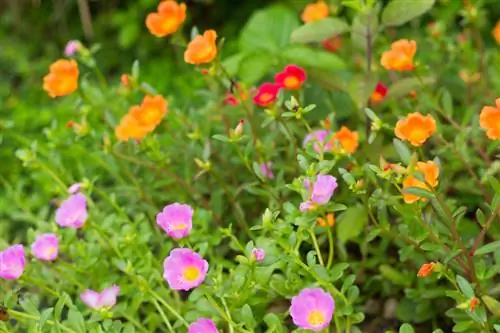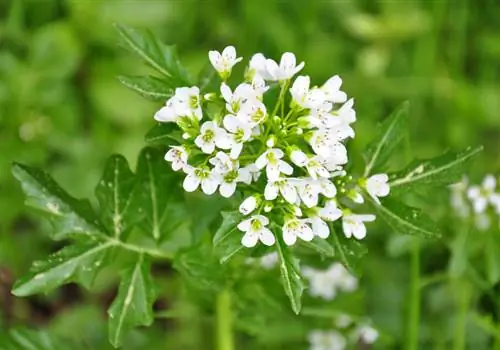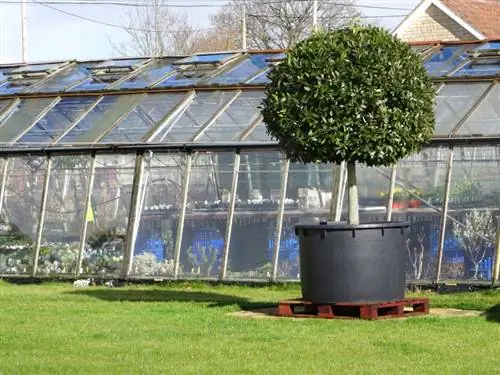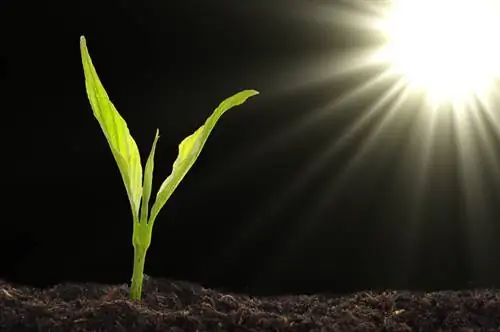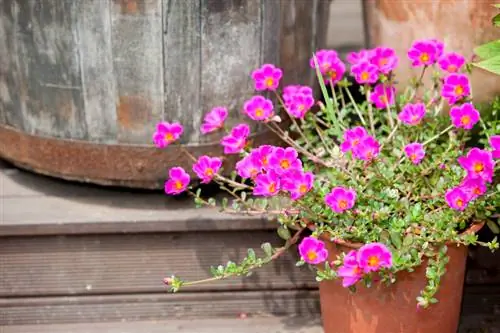- Author admin [email protected].
- Public 2023-12-25 17:45.
- Last modified 2025-01-23 11:20.
The picturesque purslane has made a name for itself on dry stone walls in midsummer, in the sunny succulent garden or as a decorative border for flower beds. Thanks to branching close to the ground, delicate height and large, colorful flowers, the annual flower thrives in all hot, sunny locations. These answers to frequently asked questions reveal what else is important for successful cultivation.

How do I care for a purslane?
The purslane (Portulaca grandiflora) is an annual, sun-loving plant that thrives in sandy, lean soil and warm locations. It requires little water and fertilizer and blooms from May to November if dead flowers are removed regularly.
Planting purslane croakers correctly
The departure of the Ice Saints in mid-May marks the beginning of the planting season for purslane. Choose a sunny, sandy, lean location that likes to be warm to hot. Here you dig small holes at a distance of 15-20 cm. If in doubt, add sand or fine grit to normal garden soil to create the appropriate permeability. Do not place the potted young plants deeper in the soil than in the nursery pot. Water regularly in the first few days and then gradually reduce the water supply to the low requirements of the succulents.
Care tips
In the optimal location, the purslane is mainly noticeable for its flowers rather than for its time-consuming care. The following measures are important:
- Only water in the bed if the summer drought persists
- Water the pot only when the substrate has dried thoroughly
- A thin layer of compost mulch covers the fertilizer requirement
- Give purslane flowers in pots and flower boxes a liquid succulent fertilizer every 4-6 weeks
- Consistently clean out withered flowers for long-lasting blooms
If you want to sow the annual summer flower yourself, leave a few withered flowers in the bed from September until frost.
Which location is suitable?
In a sunny, warm location, the purslane shows what floral power it has. A location in light partial shade is tolerated, although at the expense of the abundance of flowers. If you combine a correspondingly sandy, lean soil with the midsummer spot, the annual flower will meet all expectations.
What soil does the plant need?
The purslane prefers sandy, dry and poor soil, as it dominates in rock gardens and gravel beds. So that the summer beauty feels comfortable in normal garden soil, enrich the soil with sand or very fine grit. In the pot and balcony box, we recommend a standard standard soil as a substrate (€5.00 on Amazon), pricking substrate or potting soil emaciated with sand.
When is flowering time?
A sun-drenched, sandy, lean and hot summer location encourages the Portulaca grandiflora to bloom from May to November. To ensure that the perennial bloomer doesn't run out of floral steam, cut off the withered flowers regularly. In this way, new buds always find their way to the sunlight.
Cut purslane croakers correctly
If the purslane acts as a summer ground cover, use scissors to keep the spread in the desired shape. We also recommend regularly cutting off the withered flower stems. This creates a well-groomed appearance and attracts numerous new buds. Before winter, cut the plant close to the ground or remove the entire root ball from the ground to dispose of everything in the compost.
Watering purslane croakers
As a typical succulent, the purslane is watered very little. The natural rainfall is usually sufficient in the bed. Only water the flower a little if the summer is permanently dry. The pot and balcony box are only watered when the substrate surface has dried to a depth of 2 cm.
Fertilize purslane croakers properly
The exotic sun worshipers like spartan conditions when it comes to nutrient balance. A thin layer of compost covers the bed completely as mulch. If purslane plants thrive in a planter, apply a liquid succulent fertilizer every 4-6 weeks.
Wintering
The exotic succulents are not frost-resistant. Although purslane frogs thrive for several years in their homeland, annual cultivation is practiced in our latitudes. If you give the plant the time it needs to self-sow in the fall, the flower festival will continue next year. If you would like to try the experiment of overwintering, put away potted and box plants in good time before the first frost. In a bright location at 15-18 degrees Celsius, water occasionally to prevent the substrate from drying out. There is no fertilization during the cold season.read more
Propagate purslane croakers
The 4-6 mm small fruits contain several tiny seeds. Leave a few wilted flowers in the fall to collect the ripe seed heads. Stored in a dry, cool place, use the seeds to sow behind glass from March onwards. This is how it works:
- Mix peat-free seed soil with sand and fill it into a seed tray
- Mix the fine seeds with bird sand, sow and sieve thinly
- Moisten with water from the hand sprayer and place on the warm windowsill
- At 18-20 degrees Celsius, germination takes 8-14 days
Strong seedlings with more than 2 pairs of leaves are planted in sandy substrate and kept slightly moist until mid-May.
Purslane croakers in a pot
In pots and flower boxes, the purslane is a wonderful half-standing and half-hanging balcony beauty. Look forward to a fairytale abundance of flowers if you follow the following care measures:
- Pour a peat-free, lean substrate over a drainage made of pottery shards, such as standard soil, pricking soil or herb soil
- Plant and water 5-6 flowers per meter of balcony box
- Wate only a little when the substrate is well dried
- Pamper with liquid herb or succulent fertilizer every 4 weeks until the end of the flowering period
- Clean out wilted flowers as soon as possible to avoid the energy-sapping formation of seeds
In view of the easy propagation by sowing, the effort of overwintering on the windowsill is not worth it.
Is purslane poisonous?
The close botanical relationship of the purslane (Portulaca grandiflora) with summer purslane (Portulaca oleracea) and winter purslane (Claytonia perfoliata), the tasty herb plants and wild vegetables, always entices hobby gardeners to snack on the flower. Although the flower is not poisonous, its taste is very disappointing. After all, the flowers act as a pretty decoration for cold and warm dishes or drinks.
Beautiful varieties
- Sundial Chiffon: Silky, delicate flower pile with semi-double flowers in pink and early flowering from June
- Sundial Gold: Beautiful purslane with ruffled golden-yellow flower heads and dense branching
- Sundial Orange: Small Portulaca grandiflora that stands out with dark orange flowers
- Bicolor: Premium variety with yellow and pink flowers; the ideal ground cover for sunny, hot locations
- Stopwatch Cream: Picturesque summer flower whose cream-colored flowers adorn a pink center

